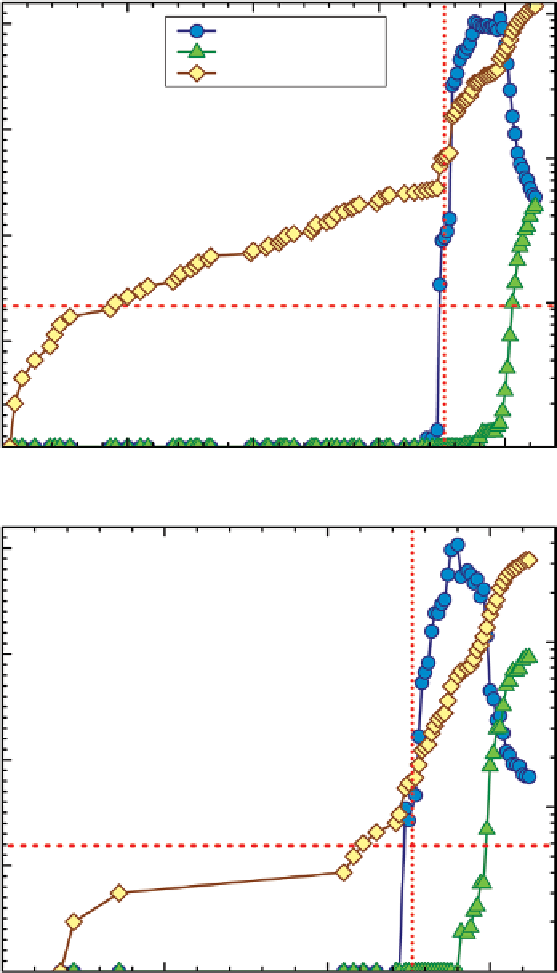Geology Reference
In-Depth Information
1000
80
HEDs
Antarctica
“Hot” deserts
Cumulative number
60
100
40
10
20
1
0
1800
1850
1900
1950
2000
Year of fall/find
80
Ureilites
100
60
40
10
20
0
1
1850
1900
1950
2000
Year of fall/find
Figure 5.1.
Percentages of total HEDs (upper) and ureilites (lower) from Antarctica (all collections) and finds from “hot” deserts
(northern Africa, the Arabian Peninsula, and western Australia), and cumulative numbers of named meteorites. Vertical dotted
lines mark the start of ANSMET, while the horizontal dashed lines represent the current percentage of each group represented by
the ANSMET collection. Statistics as of 1 October 2012 derived from the Meteoritical Bulletin Database (
http://www.lpi.usra.edu/
harvesting” of meteorites from northern Africa and the
Arabian Peninsula beginning in the 1990s (Figure 5.1).
Presently, ~25% of all HEDs and ureilites are from
the U.S. Antarctic collection. Because of the rapid
announcement, and efficient request, approval and allo-
cation process, ANSMET HEDs and ureilites (and
other meteorites) have had a much greater impact on
cosmochemistry than their numerical proportion would
suggest.
The number of types of meteorites from strongly heated
asteroids represented in the Antarctic collection is quite
large (Plates 38 to 63; 75 to 80), especially if unique mete-
orites are included. Space limitations preclude discussion
of all of them. We have chosen to focus on meteorite types

